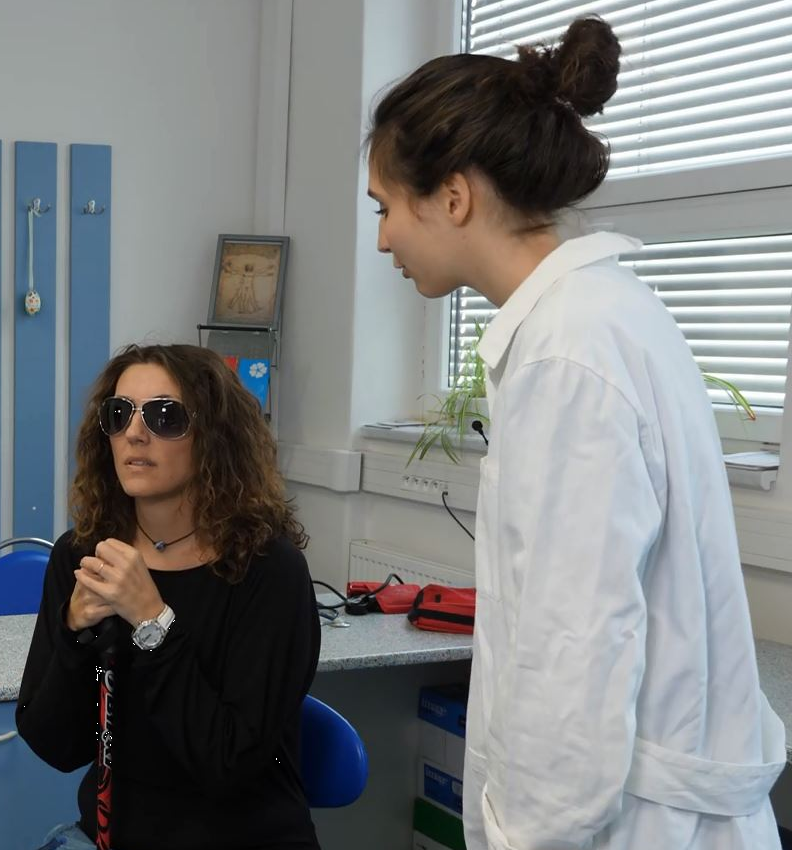Basic information
A CLIENT WITH A HEARING DISABILITY
People with a hearing disability usually have a worse vocabulary but it does not mean that we should communicate only in writing. They can often read mouths, so if we speak clearly, they  may be able to understand up to 60%. We should use gestures, keep eye contact and require feedback and try to empathize to understand their needs and reactions better.
may be able to understand up to 60%. We should use gestures, keep eye contact and require feedback and try to empathize to understand their needs and reactions better.
A CLIENT WITH A VISUAL IMPAIRMENT
We should be interested in the level of influence of the disability on a client's life, i.e. what tasks they independently manage, what tasks they have difficulties with and those they do not manage at all.
A CLIENT WITH A MOTORIC DISABILITY
Here, we may face different causes of difficult communication with such a client, such as dysarthria, which is an articulation impairment. It is shown by bad proninciation and can cause a client to speak ununderstandably. Dysarthria can be caused by palsy or the impairment of articulatory muscles. Another problem we may face is aphasia. Aphasia is the impairment or loss of the developed ability to understand and produce speech. It may be caused by a stroke, head injuries or brain tumours. Aphasia is more omplicated because it often causes the inability to understand others when they speak. This communication issue is very wide and so it is important to perceive each client individually because people who have problems with understanding or expressing themselves are often mistaken for people with a lower level of intellectual skills.